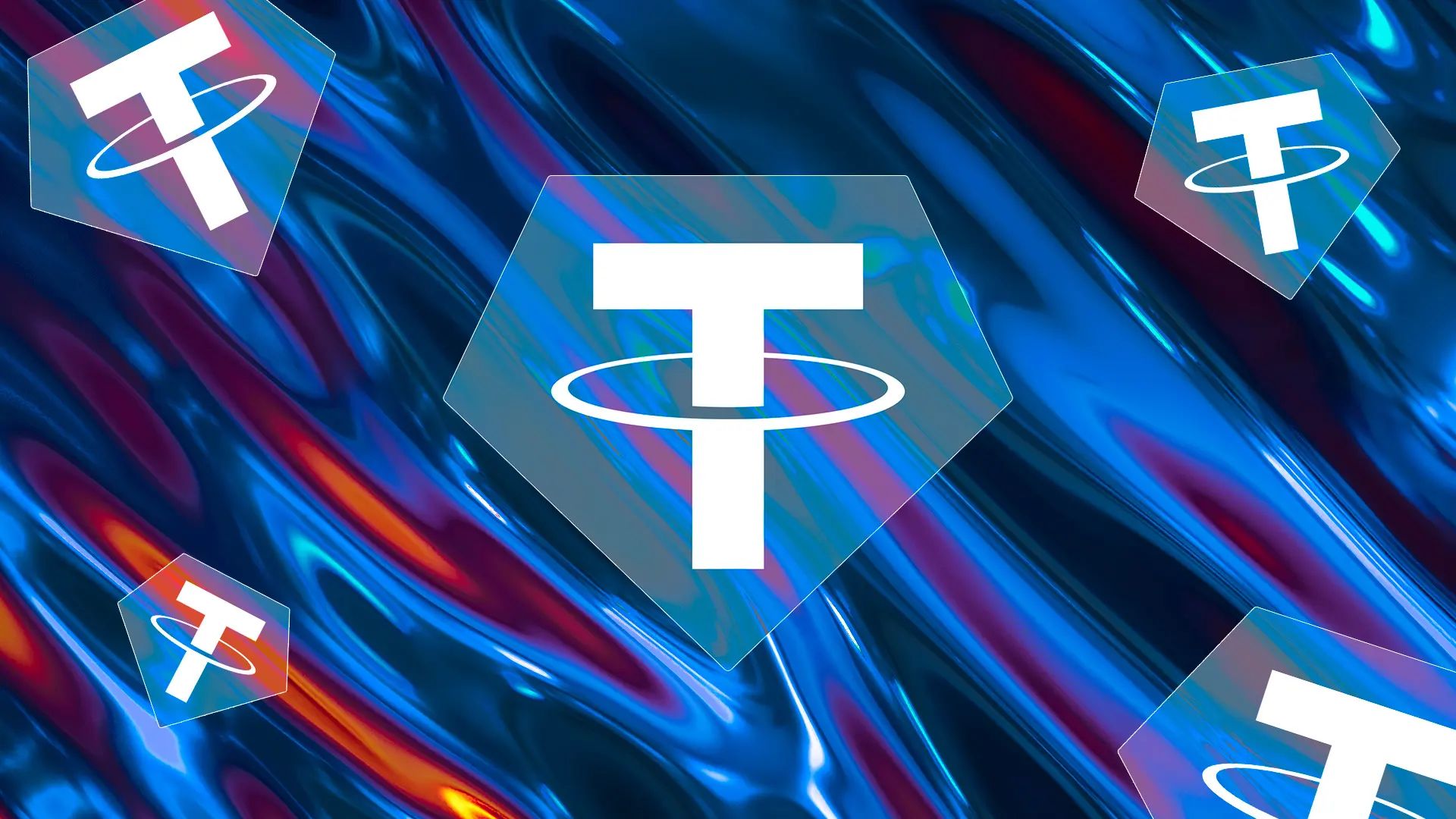Introduction
Welcome to the world of Veve, where cutting-edge technology meets the realm of art and collectibles. Veve is an innovative platform that brings digital collectibles to life through augmented reality (AR) and blockchain technology. By seamlessly combining digital art, entertainment, and collectibles, Veve offers users a unique and immersive experience like no other.
But what exactly is Veve, and how does it utilize blockchain technology? In this article, we will delve into the world of Veve and explore the role of blockchain in enhancing its functionalities. We will also discover the benefits of using this revolutionary technology in the Veve ecosystem.
Veve is a digital collectibles app that allows users to buy, sell, and trade a wide range of licensed digital collectibles from popular franchises, including comics, movies, TV shows, and more. These collectibles, known as NFTs (Non-Fungible Tokens), are unique and indivisible digital assets that are secured and verified through blockchain technology.
Speaking of blockchain, it is a decentralized and transparent digital ledger that records transactions across multiple computers in a secure and tamper-proof manner. It acts as a permanent record, ensuring the authenticity, ownership, and traceability of digital assets like NFTs.
So, how does Veve leverage blockchain technology? Veve utilizes the power of blockchain to provide a secure, scalable, and transparent infrastructure for its digital collectibles ecosystem. Let’s explore the various ways in which Veve utilizes blockchain technology to enhance the user experience and protect the digital assets.
What is Veve?
Veve is an exciting digital platform that has revolutionized the world of collectibles by bringing them to the digital realm. It offers a range of licensed digital collectibles, known as NFTs (Non-Fungible Tokens), that are based on popular franchises and intellectual properties. These digital collectibles are created in collaboration with renowned brands and artists, making them highly coveted by collectors and enthusiasts.
Veve combines the elements of art, entertainment, and collectibles to provide a unique and immersive experience for its users. Through Veve’s mobile application, collectors can browse, purchase, and interact with their favorite digital collectibles. The app utilizes cutting-edge augmented reality (AR) technology, allowing users to bring their digital collectibles to life in the real world.
One of the key features that sets Veve apart is its emphasis on limited editions and rarity. Each digital collectible on Veve is released in a limited quantity, adding to its exclusivity and value. This scarcity creates a sense of urgency among collectors, making the acquisition of these digital assets even more thrilling.
Veve also offers a marketplace where users can buy, sell, and trade their digital collectibles with other collectors. This marketplace facilitates a vibrant secondary market where collectors can showcase their collections, discover new digital assets, and engage in transactions with ease.
With its user-friendly interface and engaging features, Veve has gained tremendous popularity among collectors worldwide. It has become a go-to platform for those who are passionate about owning and interacting with unique and coveted digital collectibles.
The integration of blockchain technology further enhances the value and credibility of the digital assets on Veve. By utilizing the secure and transparent nature of blockchain, Veve ensures the authenticity and ownership of each digital collectible, providing collectors with a sense of trust and confidence in their investments.
What is blockchain?
Blockchain, often described as a revolutionary technology, is a decentralized and transparent digital ledger that records transactions across multiple computers in a secure and tamper-proof manner. It is the underlying technology that powers cryptocurrencies like Bitcoin and Ethereum, but its potential applications go far beyond the realm of digital currencies.
At its core, blockchain is a distributed ledger that consists of a chain of blocks, where each block contains a list of transactions. These transactions are verified and added to the chain through a consensus mechanism, ensuring the integrity and immutability of the data recorded on the blockchain.
One of the defining features of blockchain is its decentralization. Unlike traditional centralized systems, where a single entity controls the database and can manipulate the data, blockchain operates on a peer-to-peer network, where every participant has a copy of the entire blockchain. This distributed nature makes blockchain resistant to censorship and single points of failure, enhancing its security and reliability.
Blockchain also brings transparency to the forefront. Since every transaction recorded on the blockchain is visible to all participants, it creates a transparent and auditable system. This transparency enables trust among participants, as they can independently verify the authenticity and accuracy of the data on the blockchain.
Furthermore, blockchain provides a high level of security through cryptographic algorithms. Each transaction on the blockchain is secured using complex mathematical algorithms, making it virtually impossible to alter or forge the data. This immutability ensures that once a transaction is recorded on the blockchain, it cannot be tampered with, providing a robust and secure environment for digital transactions.
Another important aspect of blockchain is its potential for programmability through smart contracts. Smart contracts are self-executing contracts with the terms of the agreement directly written into lines of code. These contracts are stored and executed on the blockchain, offering automation, efficiency, and trust in complex transactions without the need for intermediaries.
Overall, blockchain technology offers a wide range of possibilities across various industries, including finance, supply chain management, healthcare, voting systems, and now, digital collectibles. By leveraging the secure, transparent, and decentralized nature of blockchain, Veve provides a trustworthy and robust infrastructure for the creation, ownership, and trading of digital collectibles.
How does Veve use blockchain technology?
Veve utilizes blockchain technology in several key ways to enhance its functionalities and provide a secure and transparent environment for its users.
First and foremost, Veve leverages blockchain to ensure the authenticity and ownership of digital collectibles. Each digital collectible on the Veve platform is represented by a unique token known as a Non-Fungible Token (NFT). These NFTs are minted on the blockchain, creating a verifiable and immutable record of ownership. This means that when users purchase a digital collectible on Veve, they can be confident that they are the true owners of that asset.
Additionally, Veve harnesses the decentralized nature of blockchain to prevent counterfeiting and protect the value of the digital collectibles. Since the ownership records of the NFTs are stored on the blockchain, it becomes nearly impossible to create fraudulent copies or duplicate the digital assets. This ensures the scarcity and exclusivity of the digital collectibles, making them more valuable to collectors.
Another way Veve utilizes blockchain is by providing a transparent and auditable transaction history. Every transaction involving the buying, selling, or trading of digital collectibles on Veve is recorded on the blockchain. This transaction history can be accessed by anyone, allowing users to verify the authenticity, ownership, and transactional details of any digital collectible. This transparency builds trust among users and adds an extra layer of security to the Veve ecosystem.
In addition to ownership verification and transparency, Veve leverages the efficiency and programmability of blockchain through the use of smart contracts. Smart contracts are self-executing contracts with predefined conditions written in code. Veve utilizes smart contracts to automate various processes, such as the distribution of royalties to artists and brands when their digital collectibles are sold in the secondary market. This automation streamlines the process and ensures that all parties involved receive their due rewards, without the need for intermediaries.
Overall, Veve’s integration of blockchain technology enhances the user experience by providing a secure and transparent platform for owning, trading, and interacting with digital collectibles. It leverages the unique properties of blockchain, including decentralization, transparency, and immutability, to create a trustworthy ecosystem that fosters creativity, rarity, and value.
Benefits of using blockchain in Veve
The integration of blockchain technology in Veve brings forth numerous benefits that enhance the platform’s functionalities and provide an unparalleled user experience.
One of the key advantages of using blockchain in Veve is the guarantee of authenticity and ownership. By leveraging blockchain’s decentralized and immutable nature, Veve ensures that each digital collectible is unique and cannot be duplicated or counterfeited. The ownership records of these digital assets are stored on the blockchain, allowing collectors to verify their authenticity and establish their rightful ownership.
Furthermore, blockchain technology adds a layer of transparency to Veve’s ecosystem. Every transaction involving digital collectibles is recorded on the blockchain, creating an auditable and transparent record of ownership transfers. This transparency fosters trust among users and reduces the risk of fraudulent activities, benefiting both collectors and sellers alike.
Scalability and efficiency are also significant advantages of utilizing blockchain in Veve. Traditional centralized databases can often struggle to handle high volumes of transactions, leading to delays or inefficiencies. However, with blockchain’s distributed ledger and consensus mechanism, Veve can scale seamlessly and process a large number of transactions efficiently. This ensures a smooth and frictionless user experience, even during peak trading periods.
Security is paramount in the digital world, and blockchain offers robust security measures to protect the digital collectibles on Veve. The decentralized nature of blockchain reduces the risk of a single point of failure or hacking, making it highly secure. Additionally, the use of cryptographic algorithms ensures that each transaction recorded on the blockchain is virtually tamper-proof, providing users with peace of mind regarding the safety of their digital assets.
Another benefit of blockchain technology is the ability to automate processes through smart contracts. Veve utilizes smart contracts to streamline various operations, such as royalty distribution to artists and brands when their digital collectibles are traded in the secondary market. These self-executing contracts eliminate the need for intermediaries, ensuring efficiency, accuracy, and fair compensation for all parties involved.
Finally, the integration of blockchain in Veve introduces a global marketplace for digital collectibles. Blockchain’s decentralized nature enables seamless transactions between collectors worldwide, removing geographical barriers and expanding opportunities for trading and collaboration. This global reach fosters a vibrant and diverse community of collectors, contributing to the overall growth and success of the Veve platform.
In summary, the use of blockchain technology in Veve offers multiple benefits, including authenticity, transparency, scalability, security, automation, and global accessibility. These advantages elevate the user experience, protect the value of digital collectibles, and establish Veve as a leading player in the world of digital art and collectibles.
Security of Veve transactions with blockchain
The integration of blockchain technology in Veve brings significant enhancements to the security of transactions within the platform. Blockchain’s inherent properties, such as decentralization, immutability, and cryptographic security, provide a robust and secure environment for buying, selling, and trading digital collectibles.
One of the key security advantages of using blockchain in Veve is the elimination of the risk of counterfeiting and fraud. Each digital collectible on Veve is represented by a unique token known as a Non-Fungible Token (NFT), minted on the blockchain. These tokens serve as digital certificates of authenticity, ensuring that each collectible is genuine and cannot be duplicated or tampered with. The immutable nature of the blockchain makes it virtually impossible for malicious actors to create fraudulent copies of these digital assets.
Moreover, the decentralized nature of blockchain technology adds an extra layer of security to Veve transactions. Traditional centralized systems are vulnerable to attacks and breaches as they have a single point of failure. In contrast, Veve’s decentralized blockchain infrastructure ensures that transaction data is distributed across multiple nodes, making it extremely difficult for hackers to compromise the system. This decentralization also eliminates the reliance on a single entity, reducing the risk of data manipulation or corruption.
Cryptographic security plays a vital role in securing Veve transactions. Each transaction recorded on the blockchain is secured using cryptographic algorithms, ensuring the integrity and confidentiality of the data. These algorithms make use of complex mathematical computations that are difficult to break, providing a secure and tamper-proof environment for digital collectible transactions.
Additionally, the transparency of the blockchain contributes to the security of Veve transactions. Every transaction, including the transfer of ownership, is recorded on the blockchain and is visible to all participants. This transparency allows users to independently verify the authenticity and legitimacy of the transaction, mitigating the risk of fraudulent or unauthorized activities. It fosters trust among collectors and sellers, establishing a reliable and secure marketplace for digital collectibles.
Furthermore, the use of smart contracts on the blockchain adds an extra layer of security to transactions on Veve. Smart contracts are self-executing contracts with predefined conditions written into code. These contracts automatically enforce the agreed-upon terms and conditions, eliminating the need for intermediaries and reducing the risk of human error or manipulation. The automation provided by smart contracts ensures that transactions are executed accurately, securely, and with the utmost transparency.
In summary, the integration of blockchain technology in Veve enhances the security of transactions by eliminating counterfeiting risks, providing a decentralized infrastructure, utilizing cryptographic security measures, fostering transparency, and automating processes through smart contracts. These security features instill confidence among users, ensuring the safe and protected exchange of digital collectibles on the Veve platform.
Scalability and efficiency of Veve with blockchain
Blockchain technology has greatly enhanced the scalability and efficiency of the Veve platform, enabling seamless and frictionless transactions for its users.
Traditionally, centralized systems may face limitations in handling a large volume of transactions, especially during peak trading periods. However, Veve leverages the decentralized nature of blockchain to overcome these scalability challenges. With blockchain’s distributed ledger, transactions are processed simultaneously across multiple nodes, allowing for increased capacity and scalability. This means that Veve can handle a high volume of transactions without sacrificing speed or performance.
In addition to scalability, blockchain technology also improves the efficiency of transactions on Veve. By eliminating the need for intermediaries, such as banks or clearinghouses, blockchain streamlines the transaction process. The peer-to-peer nature of blockchain enables direct transactions between buyers and sellers, reducing the time, costs, and complexities associated with intermediary involvement. This efficient model ensures that transactions on Veve can be executed quickly and with minimal friction.
Moreover, blockchain offers time-stamping and immutability of transaction records, providing an accurate and transparent history of all interactions on the Veve platform. Each transaction recorded on the blockchain is digitally signed and timestamped, ensuring the integrity and verifiability of the data. This level of transparency and auditability contributes to the efficiency of Veve by simplifying transaction reconciliation and dispute resolution processes.
Furthermore, the programmability of blockchain through smart contracts introduces automation and efficiency to the Veve platform. Smart contracts are self-executing contracts with predefined conditions written in code. Veve utilizes smart contracts to automate various processes, such as the distribution of royalties to artists when their digital collectibles are sold in the secondary market. This automation eliminates the need for manual intervention, reducing administrative tasks and boosting operational efficiency.
The scalability and efficiency brought by blockchain technology also contribute to a positive user experience on Veve. Users can confidently engage in transactions, knowing that the platform can handle high volumes of activity and provide fast and reliable service. Whether it’s browsing, purchasing, or selling digital collectibles, the enhanced scalability and efficiency of Veve ensure a smooth and seamless experience for users.
In summary, the integration of blockchain technology enhances the scalability and efficiency of the Veve platform. By leveraging blockchain’s distributed ledger, eliminating intermediaries, providing time-stamped and immutable transaction records, and automating processes through smart contracts, Veve ensures a scalable, efficient, and user-friendly environment for buying, selling, and interacting with digital collectibles.
Transparency in Veve through blockchain technology
The integration of blockchain technology in Veve brings a new level of transparency to the world of digital collectibles. Blockchain’s inherent properties, such as decentralization and immutability, provide a transparent and auditable platform where every transaction and interaction is recorded and visible to all participants.
One of the key advantages of using blockchain in Veve is the transparency it offers in regards to the ownership and transaction history of digital collectibles. Every digital collectible on Veve is represented by a unique token known as a Non-Fungible Token (NFT), which is minted on the blockchain. These NFTs serve as digital certificates of authenticity and ownership, with ownership records stored on the blockchain. This transparent system allows collectors to independently verify the provenance and ownership of a digital asset, fostering trust and confidence in the Veve platform.
Additionally, every transaction involving digital collectibles on Veve is recorded on the blockchain. This includes not only the initial purchase but also subsequent transfers and sales in the secondary market. The transaction history is transparent and visible to all participants, providing a clear record of ownership transfers and transactional details. This transparency ensures that collectors can track the journey of a digital collectible and verify its legitimacy.
Blockchain’s transparency also extends to the pricing and valuation of digital collectibles on Veve. Since the transaction history is recorded on the blockchain, users can access historical data on previous sales and pricing trends. This enables collectors to make informed decisions about pricing and value when buying or selling digital collectibles. The transparent marketplace on Veve allows for fair and informed transactions, benefiting both buyers and sellers.
Moreover, blockchain’s transparency in Veve helps prevent fraud and counterfeit activities. With a transparent and auditable record of ownership and transaction history, it becomes much more difficult for malicious actors to introduce counterfeit or unauthorized digital collectibles into the ecosystem. Collectors can verify the authenticity of a digital asset based on its transaction history and ownership records, ensuring that they are investing in genuine and legitimate items.
Transparency in Veve also creates opportunities for artists and brands to engage with collectors and build a loyal community. The open and visible nature of the blockchain allows artists and brands to showcase their creations and interact directly with collectors. This transparency fosters trust and authenticity, creating meaningful connections between creators and their fans.
In summary, blockchain technology brings unprecedented transparency to the Veve platform. Through decentralization, immutability, and transparency of ownership and transaction history, Veve provides a trustworthy and transparent ecosystem for digital collectibles. Collectors can confidently verify the authenticity and ownership of digital assets, access transparent pricing information, and engage in fair and secure transactions within the Veve marketplace.
Conclusion
The integration of blockchain technology in Veve has transformed the world of digital collectibles, providing a secure, transparent, and efficient platform for collectors to engage with their favorite digital assets. By leveraging blockchain’s unique properties, Veve ensures the authenticity and ownership of digital collectibles, enhances security, promotes transparency, and fosters trust among users.
Veve has successfully utilized blockchain to guarantee the authenticity and scarcity of digital collectibles through the use of Non-Fungible Tokens (NFTs). These tokens, minted on the blockchain, establish verifiable ownership and protect against counterfeit replicas. The decentralized nature of blockchain ensures that ownership records are tamper-proof and impossible to manipulate, creating a secure and trustworthy environment for collectors.
Transparency is another significant advantage of blockchain technology in Veve. Through the use of transparent transaction records on the blockchain, collectors can independently verify the ownership and transaction history of digital assets. The immutability of the blockchain ensures that the transaction history remains intact and free from fraudulent activities, fostering trust and confidence among users.
The scalability and efficiency of Veve are greatly enhanced by blockchain. With blockchain’s distributed ledger and consensus mechanism, Veve can handle a high volume of transactions seamlessly, even during peak trading periods. Smart contracts further streamline processes, eliminating the need for intermediaries and automating various operations, such as royalty distribution to artists. These efficiencies result in a smooth and frictionless user experience.
Security is paramount in the digital collectibles space, and Veve leverages blockchain technology to provide a robust security framework. Blockchain’s cryptographic algorithms and distributed nature ensure the integrity and confidentiality of transactions, reducing the risk of fraud, hacking, and data manipulation. The decentralized infrastructure of blockchain adds an extra layer of protection, eliminating single points of failure and enhancing data resilience.
Overall, the integration of blockchain technology in Veve has revolutionized the world of digital collectibles. It has brought transparency, security, scalability, and efficiency to the platform, offering collectors a unique and immersive experience. Veve’s utilization of blockchain ensures the authenticity and ownership of digital assets, fosters trust among users, and establishes Veve as a prominent player in the digital collectibles market.

























